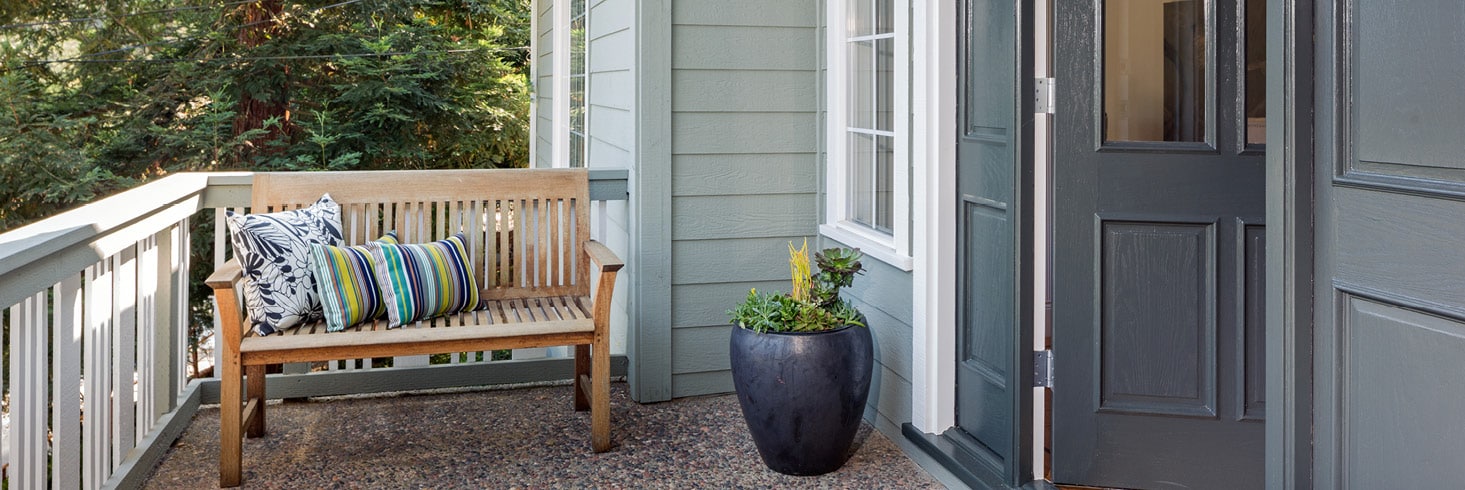
Understanding FHA Mortgage Insurance
FHA Loans open the door to homeownership for buyers who might not qualify for conventional financing, especially those with lower credit scores or less money saved for a down payment. Backed by the Federal Housing Administration, these loans are designed to be more accessible, and one key feature that helps make that possible is mortgage insurance.
This built-in safeguard plays an important role in keeping the program strong and available to future buyers. Rather than seeing it as an added expense, it’s better understood as a standard part of the loan — something that helps protect lenders and keeps home financing options flexible for more people.
What is FHA Mortgage Insurance?
FHA mortgage insurance is a built-in part of every FHA Loan. It helps protect lenders by offering an added layer of security, which in turn makes it easier for more people to qualify for a home loan. Think about it like this: You would only let your friend borrow your car if they had a driver’s license (we hope).
Rather than acting as an extra fee, mortgage insurance is simply part of how FHA Loans are structured. It supports the loan program and allows it to serve a wider range of homebuyers. This insurance is officially called Mortgage Insurance Premium (MIP), and it’s included in two parts: an upfront premium and a monthly premium.
Why FHA Loans Require Mortgage Insurance
FHA Loans are insured by the federal government, but they’re still issued by private lenders: banks, credit unions, and mortgage companies. To make this system work smoothly for everyone, mortgage insurance is included as part of the loan. It helps protect lenders from losses if a borrower stops making payments. This added protection gives lenders the confidence to offer loans to buyers who might not meet Conventional Loan requirements. FHA mortgage insurance is what helps keep FHA Loans accessible, stable, and widely available.
Upfront vs Monthly MIP
FHA mortgage insurance comes in two parts: an upfront premium and a monthly premium. Both work together to support the loan structure and help keep FHA financing widely available.
The upfront premium is a one-time amount that’s typically rolled into your loan at closing. This premium tends to linger around 1.75% of the loan amount. So, if you’re borrowing $250,000, the upfront MIP would be $4,375. Most borrowers choose to finance this amount into their mortgage rather than paying it out of pocket.
The monthly premium is paid as part of your regular mortgage payment. The rate can vary based on factors like your loan amount, down payment, and loan term. For most FHA Loans, the annual premium ranges from 0.15% to 0.75% and is divided into monthly installments. For a standard 30-year loan with less than 5% down, the rate is usually around 0.55%.
While the numbers can vary slightly depending on your specific loan, both the upfront and monthly premiums are predictable and built into your overall loan structure — no surprises or hidden costs.
How Long Do You Have to Pay?
The length of time you’ll pay FHA mortgage insurance depends on two main factors: how much you put down and the length of your loan.
If your down payment is 10% or more, MIP is required for 11 years. But if your down payment is less than 10%, MIP stays in place for the life of the loan. This is most common with the standard 3.5% down FHA loan.
While FHA mortgage insurance doesn’t automatically fall off like it can with some Conventional Loans, homeowners do have options. Many choose to refinance into a Conventional Loan down the road, once they’ve built enough equity or improved their credit, which can allow them to move forward without mortgage insurance.
FHA Mortgage Insurance vs PMI
Both FHA mortgage insurance and private mortgage insurance (PMI) serve a similar purpose: helping lenders manage risk when buyers put less than 20% down. But there are some key differences that set them apart.
FHA mortgage insurance is part of a government-backed loan program, so it has a standard structure with upfront and monthly premiums that apply to all borrowers.
Private mortgage insurance, or PMI, is linked to Conventional Loans and is typically arranged by the lender or a private insurer. PMI premiums can vary more widely based on credit score, loan size, and other factors. One big advantage of PMI is that it can often be canceled once you’ve built enough equity, usually when your loan-to-value ratio hits 80%.
In contrast, FHA mortgage insurance usually stays in place for the loan’s lifetime if the down payment is under 10%, unless refinancing becomes the route.
How Mortgage Insurance Affects Your Payment
FHA mortgage insurance is a built-in part of every FHA Loan, so it naturally plays a role in shaping your monthly mortgage payment. Understanding how it fits into your budget can help you feel more confident when planning your home purchase.
Monthly Cost Breakdown
On a $250,000 FHA Loan with less than 5% down and a standard 30-year term, the annual MIP rate is typically around 0.55%. That adds up to about $1,375 per year, or roughly $115 per month, added to your mortgage payment.
This amount is included alongside your principal, interest, property taxes, and homeowners insurance. Since it’s rolled into the total monthly payment, you won’t have to make a separate payment for it.
How It Impacts Affordability
Because MIP is built into your monthly mortgage payment, it slightly increases your overall housing cost. That’s something to keep in mind when setting your home buying budget. However, it also opens the door to FHA financing, which often requires a smaller down payment and offers more flexible qualification criteria. For many buyers, especially first-timers, this tradeoff makes homeownership more realistic — and more attainable — sooner than it would be otherwise.
Can You Remove FHA Mortgage Insurance?
FHA mortgage insurance doesn’t fall off automatically like it can with Conventional Loans, but that doesn’t mean you’re locked in forever. Once you’ve built up enough equity, or if your financial situation improves, you may be able to refinance into a Conventional Loan without mortgage insurance.
Refinancing can be a smart long-term move, especially if home values have risen or you’ve paid down a good portion of your loan. It’s worth exploring down the road if you’re looking to lower your monthly payment or adjust your loan terms.
Are FHA Loans Still Worth It?
For many buyers — especially those with lower credit scores, the need for smaller down payments, or limited savings — FHA Loans continue to be a smart path to homeownership. The built-in mortgage insurance makes the loan possible by offering lenders peace of mind, which in turn gives buyers more flexibility and access.
While FHA mortgage insurance is part of the loan structure, it supports a program designed to meet people where they are, whether that means buying with 3.5% down, recovering from past credit challenges, or getting into a home sooner rather than later.
If you’re exploring your options or wondering whether an FHA Loan is the right fit, our team at Treadstone is here to help. We’ll walk you through the numbers, explain what to expect, and help you move forward with clarity and confidence.
FAQs
How long do you have to pay FHA mortgage insurance?
You’ll pay FHA mortgage insurance for either 11 years or the life of the loan, depending on your down payment. If you put down 10% or more, it lasts 11 years; with less than 10% down, it remains for the full term.
Are MIP and PMI the same?
MIP and PMI serve a similar purpose, but they’re not the same. MIP is required for FHA Loans and is managed by the federal government. PMI is used with Conventional Loans and is provided by private insurers. They differ in how they’re structured, how long you pay them, and when (or if) they can be removed.
What does FHA mortgage insurance do?
FHA mortgage insurance helps protect lenders from losses if a borrower defaults on their loan. This added layer of protection allows lenders to offer more flexible loan options, making homeownership more accessible to a wider range of buyers.
Can you avoid FHA mortgage insurance?
FHA mortgage insurance is a built-in part of every FHA Loan, so it can’t be avoided upfront. However, you may be able to remove it later by refinancing into a Conventional Loan once you’ve built enough equity or improved your credit.

